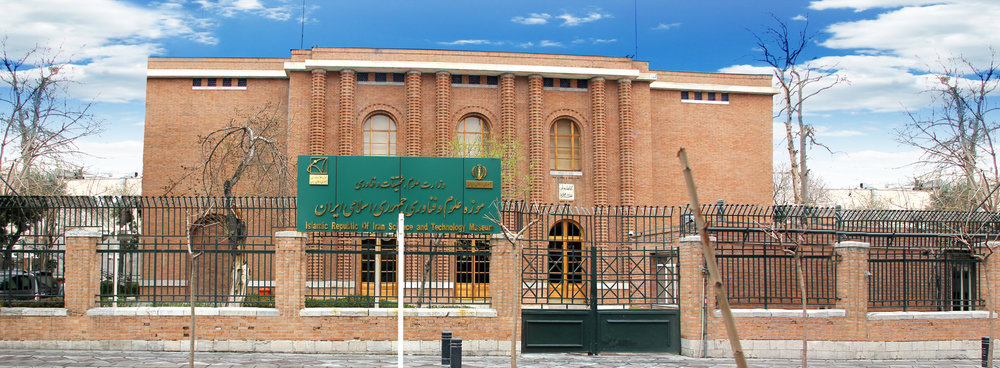Iran’s National Museum of Science and Technology seeking perfection

TEHRAN — Museums of science and technology are modern and dynamic which do not correspond to regular museums.
The “do not touch” sign which normally appear in other museums has lost its meaning in museums of science and technology as one can freely touch and conduct experiments they have only read about at the museum.
Not unlike other museums of the kind, there exists interactive experiments, covering many areas of knowledge in the Iranian National Museum of Science and Technology (INMOST). Even the visitor can participate in experiments that resulted in the current scientific knowledge.
Affiliated with Ministry of Science, Research and Technology, INMOST opened in 2010.
According to Seifollah Jalili, the museum chairman, INMOST “is not just a museum to showcase artifacts, it is a platform to create a culture of developing science and innovation to build a quality life for mankind.”
“To do so, we need people who are well-educated in science and technology and our museum would facilitate that,” Jalili remarked.
Galleries
INMOST is comprised of 6 galleries of surgical instruments, indigenous technologies, science center, Morse to mobile, renewable energies, and astronomical instruments.
The gallery of surgical instruments demonstrates the advance of surgery in the Islamic civilization by reconstruction and demonstration of some of these instruments and their usage over time. Morse to mobile exhibition tries to show the process of evolution of communication from the beginning till now. The science center is related to practical objects that led to easy learning of scientific concepts (physics, mechanics, etc.)
Indigenous technologies gallery is pertaining to Iranian and Islamic scientists’ inventions and tries to show how they use the technologies for daily life. Renewable energy gallery aims to demonstrate technologies in nuclear energy, Iranian scientists’ ability in this field and introduce nuclear martyrs. Astronomical instruments gallery is also filled with reconstructed instruments belonging to ancient Iranian astronomers and introducing some basic astronomical theories.
Renewable energy gallery aims to demonstrate technologies in nuclear energy, Iranian scientists’ ability in this field and introduce nuclear martyrs.
Activities
INMOST also holds hundreds of educational and scientific workshops, conferences, and festivals annually.
Mobile exhibitions, displaying scientific instruments, are being held in Tehran and other cities all year round. So far some 10 to 15 mobile exhibitions in association with universities and industrial centers are held across Tehran in subway stations and Azadi sport complex. Moreover some 15 mobile exhibitions were held nationwide in 15 province.
The 7th annual INMOST conference under the theme of “museum, science and society” is also scheduled to be held in January 2018 with Iranian and foreign experts in attendance.
SAR conferences are seasonal (spring, summer, autumn, winter), conducted by Iranian National Museum of Science and Technology. SAR is inspired by TED conferences. In SAR conferences, short speeches (18 minutes tops) are delivered which cover a diverse range of topics. Sciences, technology, health, education, entertainment, design and arts are some of the major topics of interest for SAR conferences. Speakers are being selected from those who have unique and notable experiences, new and innovative ideas and those who propose challenging problems.
Science for all festival is an annual event which is composed of two non-competitive and competitive sections which will be held in November. This year’s competitive section theme revolves around families’ readiness for earthquake.
The festival audiences are common people, schoolchildren, students, families and so on. Therefore, any individual or group, of all ages, educational, professional and institutional can attend it.
An uphill struggle
According to Jalili the INMOST’s current building does not meet the standards of a museum of science and technology and that as per a memorandum of understanding has been signed with the Ministry of Science, Research and Technology and Tehran Municipality and a new site is earmarked for construction of a building that will live up to the necessary requirements.
“The new museum is projected to finish within five years and countries such as Finland and France have proposed to help Iran to come up with a modern design,” Jalili highlighted.
Jalili also mentioned shortcomings stemming from lack of attention to the museum in the country.
These museums would create equal opportunities for the public to educate and learn, the museum chairman said, suggesting that setting up such museums might carry high costs but once they get off the ground they’ll become lucrative and provide employment.
Jalili also explained that the museum is trying to gain international cooperation. “We’ve negotiated and inked a memorandums of understanding with Norway, Finland, and France and we are planning on expanding international ties.”
MQ/PA
